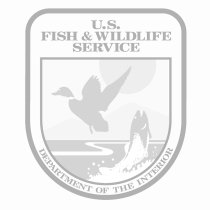Location
States
ArizonaIntroduction
The Cobra Ranch is situated in Klondyke, Arizona upstream from where Aravaipa Creek emerges as a perennial desert stream that hosts a lush riparian riparian
Definition of riparian habitat or riparian areas.
Learn more about riparian ecosystem with seven native fish species, two of which are endangered. The Cobra Ranch is part of The Nature Conservancy’s 9,000 acre Aravaipa Canyon Preserve which is managed in conjunction with surrounding public lands. The ranch and its associated public land grazing leases sit over the aquifer that feeds Aravaipa Canyon and were donated to The Nature Conservancy in 2007.
The Klondyke area has a long history of ranching beginning in the late 1870s when Anglo-Americans brought in extensive livestock herds and practiced unrestricted grazing until around 1934 when contemporary range management techniques were mandated. During this time, grazing practices combined with several droughts created lasting effects on the vegetation community and hydrology of the area. Unmanaged grazing in more recent times has continued these effects, and has helped lead to a decrease in native grass cover in favor of more woody species in upland areas. The loss in grass cover has in part exacerbated erosive forces on the land causing decreased infiltration and destructive channel incising. The ephemeral streambed of Aravaipa Creek near Klondyke has also been severely altered as a result of human intervention for agricultural purposes through the removal of large riparian trees and intensive reconstruction of the stream morphology.
Key Issues Addressed
The Cobra Ranch includes floodplain areas where sacaton grasslands were historically converted to agriculture, which was later abandoned. Fallow agricultural fields remained relatively barren. The combination of degraded floodplains and uplands has increased runoff and decreased infiltration that would otherwise be absorbed into the aquifer.
In 2008, The Nature Conservancy began restoring these abandoned agricultural fields on the Cobra Ranch property by growing native grasses with the initial goal of simply establishing ground cover. The project has grown to encompass multiple objectives related to ecosystem improvement beyond the agricultural fields. Native grasses harvested and sold as hay are contributing to passive restoration of nearby uplands.
Project Goals
- Establish ground cover in abandoned agricultural fields
- Develop economically viable alternatives to water intensive feed crops
- Active restoration of native grasslands on-site
- Increase water infiltration and aquifer recharge
- Promote sustainable grazing practices
Project Highlights
- Low Water Use for Increased Climate and Economic Resilience: The native hay produced at Cobra Ranch requires a fifth of the water used to grow more traditional feed crops like alfalfa. It demonstrates an economically viable alternative that will only become more relevant as climate trends in the Southwest tend towards warmer and drier conditions.
- Enhancing Recharge to Support Key Species: The location of the fields would have been historically dominated by giant sacaton (Sporobolus wrightii), a large perennial bunchgrass that is a critical ecosystem component in floodplains where the water table is within about 20 feet from the surface. Though sacaton persists naturally in the area, its dominance has subsided due to a lower water table. Restoring abandoned agricultural fields in floodplain areas like the one at Cobra Ranch can increase water infiltration and help to recharge the aquifer which will improve conditions for sacaton and other species.
- Native Grass Hay Production: Native grass is harvested and baled into hay, which The Nature Conservancy sells to neighboring ranchers and feeds to the small herd of cattle at the Cobra Ranch. Cattle consuming the hay disperse native grass seed, contributing to passive restoration of uplands.
- Adaptive Management: The experimental nature of this project allowed for adaptability of techniques and goals. While it started with the basic aim of increasing ground cover in abandoned agriculture fields with native grasses, it now includes numerous and broader objectives.
Lessons Learned
Wildlife Forage: Native grass that remains unharvested provides habitat and forage for wildlife and birds, including the Botteri’s sparrow and rufous-winged sparrow that were once nearly extirpated.
- Farming native grasses leads to substantial water savings. The Cobra Ranch native grass ag fields use 1-1.5 acre-feet per acre per year of water as opposed to 3 acre-feet for common feed crops like wheat or barley, and 5 acre-feet for alfalfa.
- Native grasses allow for greater water-use flexibility. Due to the drought tolerance of many native grass species, native grass farming allows for greater flexibility in irrigation. Native grass crops will persist without irrigation if water budgets are constricted due to drought, or to accommodate other regional water demands.
- Using native grass hay for feed encourages passive restoration of uplands because cattle disperse seed across the property.
- This project helped garner interest from the area’s ranching community in native grass hay production, however there are some limitations to widespread adoption of this practice. Although native grasses are more nutritious than other common feeds and require less water to produce, there is little incentive for growers to use less water. In many rural areas of Arizona, there are few restrictions on water use and water is generally very cheap. Additionally, many traditionally grown feed crops can be harvested multiple times in a year while native grass crops may allow up to three harvests per year.
- In addition to varying planting techniques, adjusting harvesting techniques can result in more diverse benefits.
- Sections that remain unharvested provide habitat and forage for wildlife and birds, including the Botteri’s sparrow and rufous-winged sparrow that were once nearly extirpated
- There are a suite of challenges associated with farming native grasses, especially when working with a mix of species. Over the course of the project, 20 native grass species have been planted at the Cobra Ranch. It has been a process of trial and error in order to narrow down species that are suitable for restoration and for hay production.
- Some species that were seeded did not emerge for several years. This could be due to successional qualities of various species--those that act as early seral species after disturbance were the first to emerge, while those that benefit from more stable conditions emerged later.
- Irrigation can select for species and genotypes that benefit from increased moisture levels. The plants that thrive under these conditions are likely those that would do best in a wet monsoon year in natural settings.
- Species that tend to thrive in drought years in a natural setting, including black grama (Bouteloua eriopoda) and tobosa grass (Hilaria mutica), were more difficult to grow in an irrigated agricultural field.
- The following species have been grown at the Cobra Ranch:
- Bothriochloa barbinoides / Cane beardgrass
- *Bouteloua curtipendula / Sideoats grama
- Bouteloua eriopoda / Black grama
- *Bouleloua gracilis / Blue grama
- Bouteloua hirsuta /Hairy grama
- Bouteloua rothrockii / Rothrock grama
- Eragrostis intermedia / Plains lovegrass
- Hilaria belangeri / Curly mesquite
- *Leptochloa dubia / Green sprangletop
- Panicum obtusum / Vine mesquite
- Schizyachrium scoparium / Little Bluestem
- *Setaria machrostachya / Plains bristlegrass
- Sporobolis airoides / Alkali sacaton
- *Sporobolus cryptandra / Sand dropseed
- Sporbolus wrightii / Giant sacaton (planted as seedlings)
- Digitaria californica / Arizona Cottontop
*species that are easiest to farm
- A combination of planting strategies allows for maximized adaptability. Spreading seed in addition to planting seedlings helps increase likelihood of plant establishment
- Minimized plant spacing helps reduce weeds and increase production. This project experimented with various planting techniques including the use of a seedling planter to plant species that don’t establish as well with direct seeding.
- When deciding on spacing between plants, opt for higher density than found in natural settings and support this density with supplemental irrigation.
- Higher density of desired species reduced space available for weedy species.
- Irrigation levels can be decreased after plant establishment.
Next Steps
- Develop a long-term strategy to promote interest in growing native grass by commercial farmers
- Work with newly formed Aravaipa Watershed Conservation Alliance and local ranchers to incorporate use of native grass seed into range management practices improve range conditions and spread native grass seed
- Partner with University of Arizona researchers to study carbon sequestration in soils where native grass fields are established to confirm that permaculture-style farms promote higher levels of C sequestration than fields that are continually plowed
Funding Partners
- US Fish and Wildlife Service: Partners for Fish and Wildlife
- US Bureau of Land Management
- National Fish and Wildlife Foundation
Resources
- Environmental Change in Aravaipa, 1870-1970: An Ethnoecological Survey by Hadley Associates 1991
- The Nature Conservancy, Aravaipa Canyon Preserve webpage
Contact
- Mark Haberstich, Aravaipa Canyon Preserve Manager, The Nature Conservancy: mhaberstich@tnc.org
Case Study Lead Author
- Ashlee Simpson, CART Graduate Research Assistant, University of Arizona
Suggested Citation
Simpson, A. C. (2018). “Native Grass Hay Production for Multiple Benefits at the Cobra Ranch.” CART. Retrieved from https://www.fws.gov/project/benefits-native-grass-hay-production.







